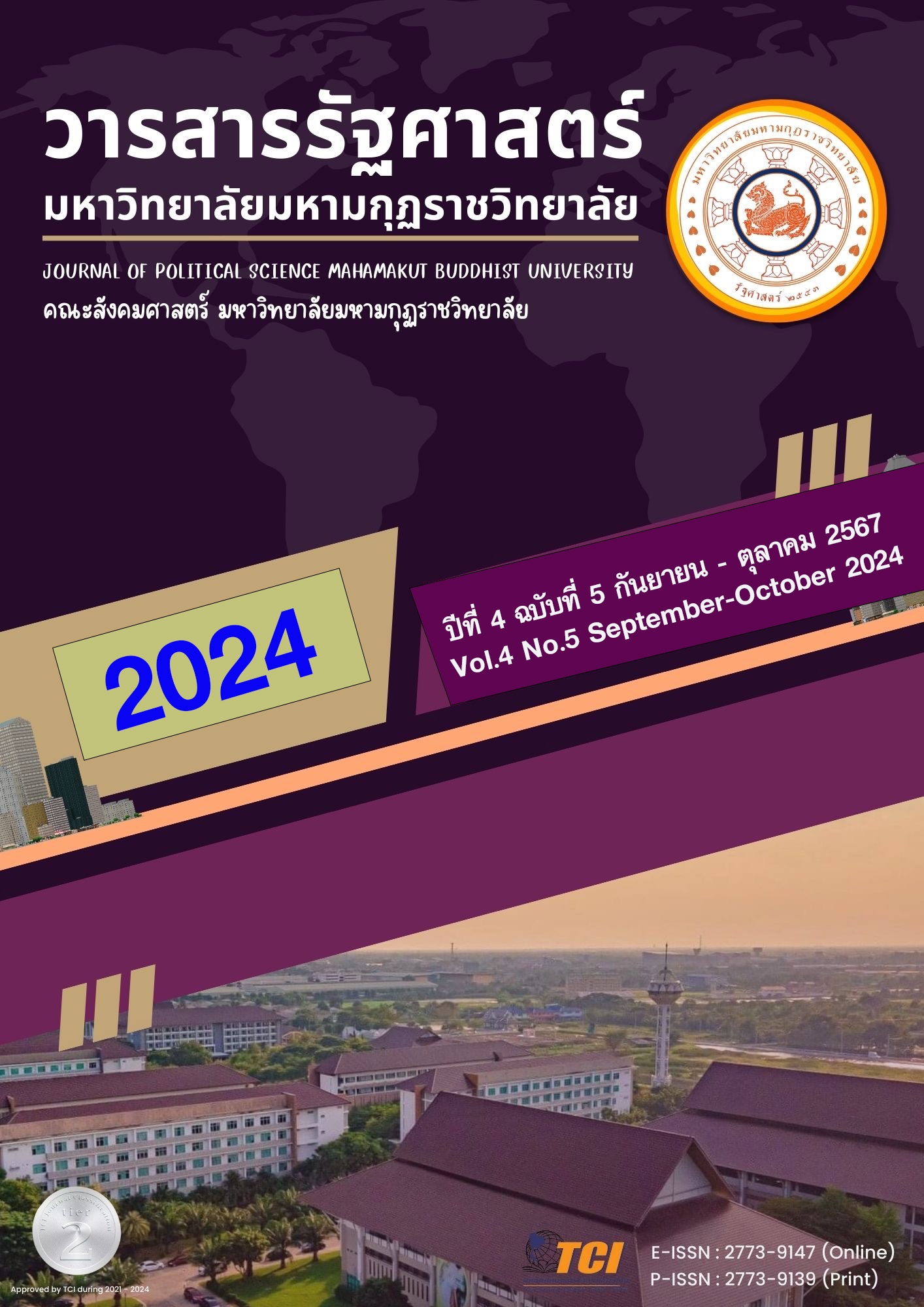COMPONENTS AND INDICATORS OF EDUCATIONAL RESOURCE MANAGEMENT OF SMALL PRIMARY SCHOOLS: CONFIRMATORY FACTOR ANALYSIS
Main Article Content
Abstract
This research is quantitative research with the objective 1) To analyze the level of educational resource management of small primary schools. and 2) Confirming component analysis of educational resource management of small primary schools. The sample consisted of 150 small primary school administrators under the Office of the Basic Education Commission, selected through simple random sampling. Data were collected using a 5-point Likert scale questionnaire and analyze quantitative data with statistics, frequencies, percentages, averages, and standard deviations. Confirmatory factor analysis (Confirmatory Factor Analysis: CFA)
The research findings were as follows:
1) On the level of educational resource management in small primary schools, budget management had the highest score, followed by personnel management, facilities and learning resources management, material and equipment management, and educational resource mobilization, respectively.
2) On the confirmatory component analysis of educational resource management in small primary schools, the model was significantly consistent with empirical data, with Chi-square = 381.710, df = 245, p = 0.000, CMIN/DF = 1.558, CFI = .955, GFI = .824, AGFI = .790, RMR = .026, and RMSEA = .061. These indices indicated that the measurement model of educational resource management in small primary schools was significantly aligned with the empirical data, demonstrating that the measurement model of educational resource management in small primary schools was consistent with the empirical data as hypothesized.
Article Details

This work is licensed under a Creative Commons Attribution-NonCommercial-NoDerivatives 4.0 International License.
References
ณัฐพล พันธ์ภิญญา. (2564). กลยุทธ์การบริหารโรงเรียนขนาดเล็ก. วารสารศึกษาศาสตร์ มหาวิทยาลัยมหาสารคาม, 15(2),220-231.
พัชราภรณ์ ดวงชื่น. (2563). การบริหารจัดการศึกษารับความปกติใหม่หลังวิกฤตโควิด-19. วารสารศิลปะการจัดการ, 4(3),783-795.
พระครูวินัยธรสุวรรณ สุวรรณโณ (เรืองเดช). (2566). การใช้ระบบสื่อสารสารสนเทศพัฒนาการเรียนการสอนของสถานศึกษาในจังหวัดขอนแก่น. วารสารสหศาสตร์การพัฒนาสังคม, 1(6), 1-14.
พระครูวินัยธรสุวรรณ สุวรรณโณ (เรืองเดช), บุญเพ็ง สิทธิวงษา และ กนกอร บุญมี.(2567). การใช้หลักอิทธิบาท 4 ในการปฏิบัติหน้าที่ของบุคลากรทางการศึกษาในเขตจังหวัดมหาสารคาม. วารสารส่งเสริมและพัฒนาวิชาการสมัยใหม่, 2(1), 1-14.
รัตนา กาญจนพันธุ์. (2563). การบริหารสถานศึกษาในสถานการณ์วิกฤตไวรัสโคโรนา 2019 (COVID – 19). วารสารดุษฎีบัณฑิตทางสังคมศาสตร์, 10(3), 545-556.
สำนักงานคณะกรรมการการศึกษาขั้นพื้นฐาน. (2562). แผนบริหารจัดการโรงเรียนขนาดเล็กปี พ.ศ. 2562-2565. กรุงเทพมหานคร: อักษรไทย.
Byrne, B. M. (2010). Structural Equation Modeling with AMOS: Basic Concepts, Applications, and Programming (2nd ed.). Routledge.
Cronbach, L. J., & Furby, L. (1970). How we should measure" change": Or should we? Psychological bulletin, 74(1), 68.
Goulet-Pelletier, J. C., & Cousineau, D. (2018). A review of effect sizes and their confidence intervals, Part I: The Cohen’sd family. The Quantitative Methods for Psychology, 14(4), 242-265.
Hair, J. F., Black, W. C., Babin, B. J., & Anderson, R. E. (2014). Multivariate Data Analysis (7th ed.). Pearson Education Limited.
Kusmaryono, I., Wijayanti, D., & Maharani, H. R. (2022). Number of Response Options, Reliability, Validity, and Potential Bias in the Use of the Likert Scale Education and Social Science Research: A Literature Review. International Journal of Educational Methodology, 8(4), 625-637.
Soper, D.S. (2024). A-priori Sample Size Calculator for Structural Equation Models [Software]. Available from https://www.danielsoper.com/statcalc


